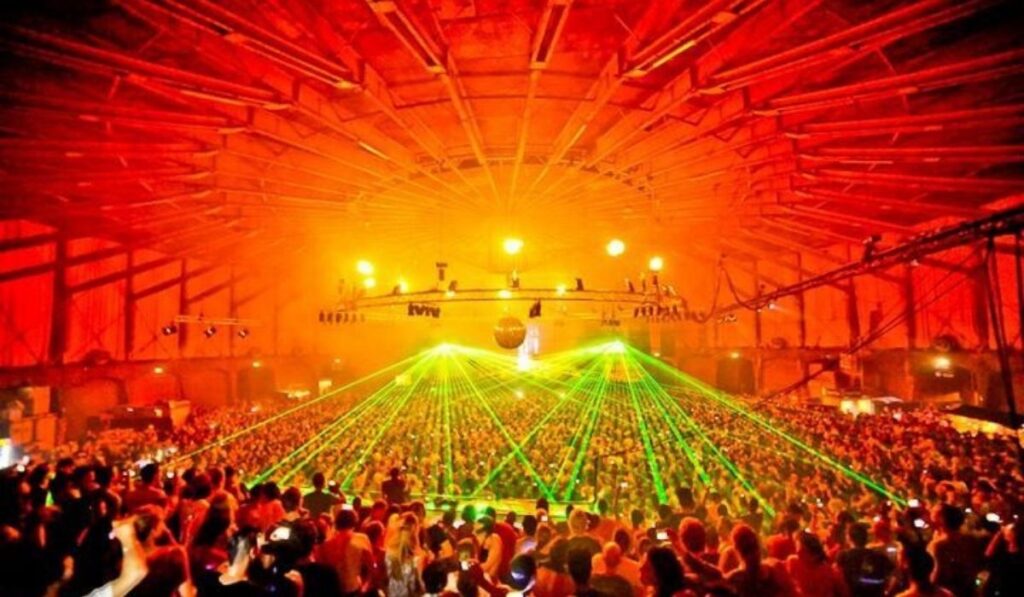Techno music, a genre that emerged in the 1980s in Detroit, has evolved into a global phenomenon, influencing various subgenres and continuously pushing the boundaries of electronic music. At the heart of this genre are the producers, the creative minds who craft the beats, melodies, and rhythms that define techno. This article delves into the world of techno music producers, exploring their roles, notable figures, and the impact they have had on the music industry.
The Role of a Techno Music Producer
A techno music producer is responsible for creating the music, often from scratch. Unlike traditional bands or artists who might rely on acoustic instruments, techno producers typically use electronic equipment such as synthesizers, drum machines, and software-based digital audio workstations (DAWs). Here’s a breakdown of their core responsibilities:
- Sound Design: Crafting unique sounds that form the basis of techno tracks. This involves manipulating waveforms, applying effects, and creating textures that give techno its distinctive sound.
- Beat Programming: Designing complex rhythmic patterns using drum machines and sequencers. The beats are central to techno music, providing the driving force behind the tracks.
- Arrangement: Structuring the track to create a journey for the listener. This includes building up tension, creating drops, and ensuring the track flows seamlessly from start to finish.
- Mixing and Mastering: Balancing the various elements of the track to ensure clarity and impact. This step is crucial for making sure the music sounds great on various sound systems, from club speakers to headphones.
Pioneers of Techno Music
Several producers have been instrumental in shaping the techno genre. Here are some of the most influential figures:
- Juan Atkins: Often referred to as the “Godfather of Techno,” Atkins was a founding member of the Belleville Three, the trio credited with pioneering techno music in Detroit. His work under aliases like Model 500 has had a lasting impact on the genre.
- Derrick May: Another member of the Belleville Three, May’s productions are known for their emotional depth and innovative use of technology. Tracks like “Strings of Life” remain timeless classics.
- Kevin Saunderson: The third member of the Belleville Three, Saunderson brought a house influence to techno, helping to create the subgenre of techno-house. His Inner City project produced several chart-topping hits.
Modern Techno Innovators

Techno continues to evolve, with new producers bringing fresh ideas and sounds to the genre. Some of the contemporary producers making waves include:
- Richie Hawtin: A Canadian producer known for his minimal techno style, Hawtin has been at the forefront of techno innovation for decades. His work as Plastikman and his influential label, Minus, have left a significant mark on the scene.
- Nina Kraviz: A Russian DJ and producer, Kraviz has gained acclaim for her eclectic productions and energetic DJ sets. Her label, трип (Trip), has become a hub for experimental techno.
- Amelie Lens: A Belgian DJ and producer, Lens is known for her high-energy techno sets and productions. She has quickly risen to prominence in the techno world, headlining major festivals and releasing on top labels.
The Impact of Technology
Technology has always been at the core of techno music, and advancements in music production tools continue to shape the genre. Modern producers have access to a vast array of hardware and software that allows them to experiment and push the boundaries of sound. Some key technological advancements include:
- Software Synthesizers: Programs like Serum, Massive, and Sylenth1 have revolutionized sound design, allowing producers to create complex sounds that were previously impossible.
- Digital Audio Workstations (DAWs): Software like Ableton Live, FL Studio, and Logic Pro X provide powerful tools for arranging, editing, and mixing tracks.
- Hardware Synthesizers and Drum Machines: Classics like the Roland TR-808 and TR-909 continue to be used alongside modern hardware like the Moog Sub 37 and Elektron Digitakt.
The Global Techno Scene
Techno music has a vibrant global scene, with hotspots in cities like Berlin, Detroit, and Amsterdam. Each city has its own unique take on the genre, influenced by local culture and history. Here are a few notable techno hubs:
- Berlin: Often considered the techno capital of the world, Berlin is home to legendary clubs like Berghain and Tresor. The city’s underground scene is known for its raw, industrial sound.
- Detroit: The birthplace of techno, Detroit continues to be a major influence on the genre. The annual Movement Electronic Music Festival celebrates the city’s rich techno heritage.
- Amsterdam: Known for its vibrant electronic music scene, Amsterdam hosts the annual Amsterdam Dance Event (ADE), which attracts top techno producers and DJs from around the world.
The Future of Techno
As technology continues to evolve, so too will techno music. Emerging trends such as artificial intelligence and virtual reality are beginning to make their mark on music production and performance. Here are a few potential future developments:
- AI in Music Production: AI algorithms are being used to assist with everything from sound design to mixing. This could lead to new creative possibilities and help producers explore uncharted sonic territory.
- Virtual Reality Performances: VR technology is enabling new ways for artists to perform and interact with audiences. Virtual techno clubs and festivals are already starting to appear, offering immersive experiences.
- Sustainable Touring: As the music industry becomes more aware of its environmental impact, producers and DJs are exploring ways to make their tours more sustainable. This includes using renewable energy sources and reducing travel emissions.
Evolution of Techno Music
Techno music has come a long way since its humble beginnings in the underground clubs of Detroit in the 1980s. Over the years, it has evolved and transformed into a powerful, global phenomenon that has captured the hearts and minds of music lovers all over the world.
In its early days, techno music emerged as a form of artistic expression and rebellion against the social and economic challenges faced by the people of Detroit. Influenced by genres like funk, disco, and electronic music, techno fused together rhythmic beats, synthesized sounds, and futuristic elements to create a unique and groundbreaking sound.
The pioneers of techno, including Juan Atkins, Derrick May, and Kevin Saunderson, played a pivotal role in shaping the genre and revolutionizing the music industry. Their innovative use of drum machines, synthesizers, and sequencers helped define the distinct characteristics of techno music.
As techno music gained popularity, it started spreading its influence beyond Detroit and reached a global audience. It found a welcoming home in Europe, particularly in cities like Berlin and London, where it became synonymous with the underground club scene. Techno began to transcend boundaries and became a universal language that connected people from different cultures and backgrounds.
Today, techno music continues to evolve and push boundaries. Artists and DJs are constantly experimenting with new sounds, techniques, and technology to create fresh and exciting tracks. The genre has expanded to include various subgenres like acid techno, minimal techno, and techno-house, catering to the diverse tastes of its growing fan base.
The impact of techno music on the music industry cannot be underestimated. It has influenced and inspired countless artists across different genres, and its influence can be heard in mainstream pop, hip-hop, and electronic music. Techno festivals and events draw massive crowds from all over the world, showcasing the genre’s global reach and its ability to bring people together through the power of music.
The evolution of techno music is an ongoing journey, and its future is filled with endless possibilities. As technology advances and creativity continues to flourish, we can expect to witness even more exciting developments in this remarkable genre. Techno music continues to push boundaries and redefine what is possible in the world of music, captivating the hearts and souls of millions of fans around the globe.
Origins and Influences
Techno music originated in the underground clubs of Detroit in the 1980s. It was born out of a desire for artistic expression and rebellion against the social and economic challenges faced by the city at that time. Techno was heavily influenced by genres such as funk, disco, and electronic music, which provided the foundation for its unique sound.
The pioneers of techno, including Juan Atkins, Derrick May, and Kevin Saunderson, played a pivotal role in shaping the genre and revolutionizing the music industry. They experimented with synthesizers and drum machines, creating futuristic sounds that pushed the boundaries of what was considered electronic music at the time.
One of the key influences on techno music was the Motown sound, which was prevalent in Detroit. The rhythmic and melodic elements of Motown influenced the repetitive beats and groovy basslines that are characteristic of techno. Additionally, the industrial and post-industrial landscape of Detroit also had an impact on the genre, reflected in its dark and mechanical tones.
Techno music quickly gained popularity not just in Detroit, but also in Europe. The genre found its way to cities like Berlin and London, where it became a prominent part of the underground club scene. Its hypnotic and energetic beats resonated with audiences and marked the beginning of techno’s global influence.
The influence of techno music has extended beyond the clubs and into mainstream culture. It has inspired artists across different genres and has had a significant impact on mainstream pop, hip-hop, and electronic music. The use of techno-inspired beats and elements has become a common feature in contemporary music, showcasing the genre’s widespread influence.
Techno music continues to evolve, pushing boundaries and experimenting with new sounds and techniques. Advancements in technology have opened up new possibilities for artists and DJs, enabling them to explore innovative ways of creating and performing techno music. As technology continues to advance and creativity flourishes, the future of techno music holds endless possibilities.
The Pioneers of Techno
The emergence of techno music in the underground clubs of Detroit can be attributed to the groundbreaking work of a few visionary artists. These pioneers played a pivotal role in shaping the genre and revolutionizing the music industry as a whole.
Juan Atkins, often referred to as the “Godfather of Techno,” was one of the key figures in the development of the genre. In the early 1980s, Atkins, alongside Derrick May and Kevin Saunderson, formed a music collective known as the Belleville Three. Together, they laid the foundation for the future of techno music. Atkins’ track “Clear,” released under the name Cybotron in 1983, is considered a seminal piece in the genre’s history.
Derrick May, another member of the Belleville Three, is recognized for his innovative and futuristic approach to music production. May’s tracks, such as “Strings of Life” and “Nude Photo,” struck a chord with audiences around the world and became anthems of the genre. His use of synthesizers and drum machines pushed the boundaries of electronic music and set the stage for the evolution of techno.
Kevin Saunderson brought his own unique style to the genre, infusing elements of funk and disco into his tracks. He gained recognition for his group Inner City’s hit single “Big Fun” in 1988, which became an international success. Saunderson’s contributions to the genre expanded its reach and popularity, making techno more accessible to mainstream audiences.
The pioneering work of Atkins, May, and Saunderson laid the groundwork for the wide-ranging influence of techno music. Their experimentation with synthesizers, drum machines, and futuristic sounds created a distinct sonic landscape that continues to define the genre today. Without their contributions, techno music may have remained confined to the underground clubs of Detroit rather than evolving into a global phenomenon.
As techno music continues to evolve and attract a broader audience, it is important to recognize and celebrate the pioneers who paved the way for its success. Their vision and creativity continue to inspire a new generation of artists and shape the future of techno music.
Exploring the Sounds of Techno
Techno music is known for its futuristic and innovative sounds that have reshaped the music industry. This section will delve into the various elements that contribute to the unique sonic landscape of techno. From the pulsating beats to the intricate synth melodies, techno music offers a captivating auditory experience that continues to captivate listeners around the world.
Rhythmic Foundation
At the core of techno music lies its infectious rhythmic foundation. Characterized by its driving, repetitive beats, techno draws inspiration from electronic genres such as house, funk, and disco. With bpm (beats per minute) typically ranging from 120 to 150, techno’s propulsive rhythm sets the stage for energetic and hypnotic dancefloor experiences.
Synthesizers and Drum Machines
One of the defining features of techno music is its heavy reliance on synthesizers and drum machines. These electronic instruments allow producers to create an array of otherworldly sounds and textures that give techno its distinctive futuristic vibe. From the deep basslines to the ethereal pads, synthesizers play a crucial role in shaping the sonic palette of techno.
Similarly, drum machines are fundamental in creating the driving beats that dominate techno tracks. These programmable electronic devices allow producers to craft precise and intricate rhythm patterns. Using drum machines, artists can experiment with various percussion sounds, adding a rhythmic complexity to the music.
Experimental and Boundary-Pushing
Techno music is known for its experimental nature and relentless pursuit of pushing boundaries. Artists constantly seek new ways to innovate and challenge the conventions of the genre. Echoing the genre’s origins in the underground clubs of Detroit, techno music continues to evolve and adapt, incorporating new technologies and pushing the limits of sound.
From ambient textures to distorted vocals and unique sampling techniques, techno artists are not afraid to explore unconventional sounds. This bold experimentation has led to the creation of subgenres within techno, giving rise to diverse styles such as acid techno, minimal techno, and Detroit techno.
A Sonic Journey
Exploring the sounds of techno is like embarking on a sonic journey. Each track unfolds with its own distinctive soundscape, taking the listener on a captivating ride. Techno’s immersive and forward-thinking sound design has made it a staple in dance clubs, festivals, and even art galleries around the world. Its hypnotic beats and futuristic melodies provide an escape from the ordinary, allowing listeners to lose themselves in the music.
The Impact of Techno Music
Techno music has made a profound impact on the music industry and the cultural landscape as a whole. Its innovative sound and hypnotic beats have transcended boundaries and captivated audiences around the world. Here are some key ways in which techno music has left its mark:
1. Revolutionizing Dance Music: Techno music emerged in the 1980s as a response to the monotonous rhythms of disco and the commercialization of other electronic music genres. Its driving beats and repetitive nature created a new sound that was perfect for dancing, allowing people to immerse themselves in the music and let go of their inhibitions.
2. Shaping Electronic Music: Techno music laid the foundation for various subgenres within electronic music, including house, trance, and ambient. It introduced new production techniques and sound design principles that have become integral to electronic music production today.
3. Cultural and Social Movements: Techno music became synonymous with underground rave culture, providing a platform for marginalized communities to express themselves and find belonging. Its inclusive and non-judgmental ethos has fostered a sense of unity and acceptance among its followers.
4. Technological Advancements: Techno music has been at the forefront of technological advancements in music production and performance. From the early use of drum machines and synthesizers to the integration of cutting-edge software and hardware, techno pioneers have continually pushed the boundaries of what is possible with sound.
5. Global Reach: Techno music has transcended geographical boundaries, spreading its influence to all corners of the globe. It has become an international phenomenon, with dedicated techno scenes in cities like Detroit, Berlin, and Amsterdam. Festivals such as Movement Detroit and Awakenings attract thousands of techno enthusiasts from around the world.
Techno music’s impact goes far beyond the dance floor. Its influence can be seen in fashion, art, and even film. As the genre continues to evolve and push boundaries, it will undoubtedly leave an even greater mark on the music industry and shape the sound of the future.
Frequently Asked Questions
1. What is the article about?
The article discusses the origins, influences, and unique sonic landscape of techno music, emphasizing its impact on the music industry and cultural landscape.
2. What elements contribute to the futuristic sound of techno?
Techno music’s futuristic sound is created through its rhythmic foundation, the use of synthesizers and drum machines, and its experimental nature.
3. How does techno music captivate listeners?
Techno music takes listeners on a sonic journey, providing an escape from the ordinary through its captivating and innovative sounds.
4. What impact has techno music had on the music industry and culture?
Techno music has revolutionized dance music, shaped electronic music, fostered cultural and social movements, driven technological advancements, and gained a global reach.
5. Where else can the influence of techno music be seen?
The influence of techno music extends beyond the dance floor and can be seen in fashion, art, and film, shaping various aspects of contemporary culture.
6. Will techno music continue to influence the future sound?
The article predicts that techno music will continue to shape the sound of the future, ensuring its ongoing significance in the music industry and cultural landscape.
Conclusion
Techno music producers are the driving force behind one of the most influential and enduring genres of electronic music. From the pioneers in Detroit to modern innovators around the world, these artists continually push the boundaries of sound and technology. As the genre continues to evolve, techno producers will undoubtedly remain at the forefront of musical innovation, shaping the future of electronic music. Whether you’re a long-time fan or new to the genre, the world of techno offers a rich and ever-changing landscape of sounds to explore.







































